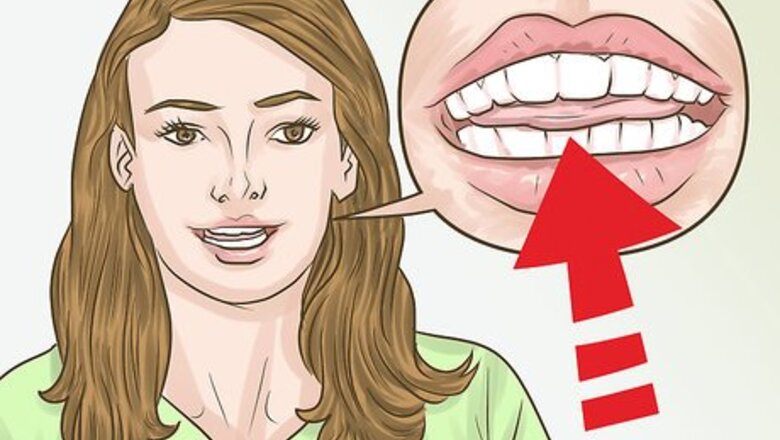
views
Identifying Your Lisp Type

Notice if your tongue protrudes between your two front teeth. This is called an interdental lisp. When you have this kind of lisp, you make the “th” sound for “s” and “z” sounds in words when you speak. Interdental lisps often occur in young children and can be corrected if caught early enough.

Check if your tongue touches your two front teeth. This is called a dentalized lisp. Your teeth will touch your two front teeth when you try to say “s” or “z” sounds in words. This type of lisp is common in young children and often goes away as the child gets older. Doing speech therapy and getting dental treatment can also improve this type of lisp.

Listen for a wet sound when you speak. You may also notice air escapes outside the sides of your tongue, making the wet or slushy sound when you try to say words with the “s” or “z” sound. This is called a lateral lisp. A lateral lisp needs to be addressed with speech therapy so it can improve.
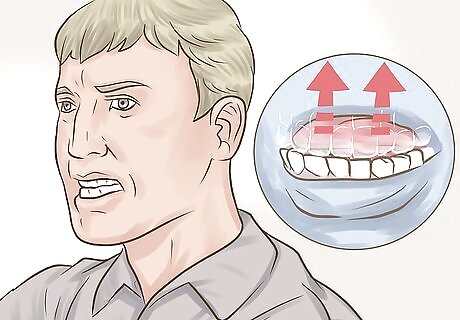
Notice if your tongue touches your palate when you speak. Your tongue may touch your soft palate, or the roof of your mouth, when you try to say “s” or “z” sounds. This is called a palatal lisp. This type of lisp should be treated with speech therapy. Both lateral and palatal lisps are considered more severe than interdental and dentalized lisps. You may need to try several different treatments for lateral and palatal lisps to cope with them well.
Doing Speech Therapy
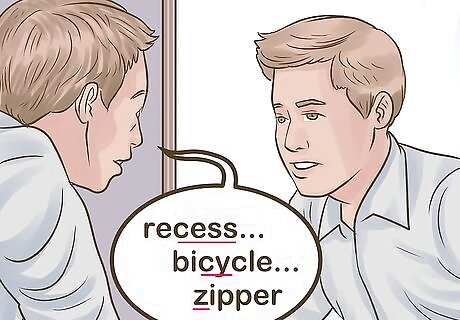
Practice “s” and “z” sounds. Start by saying “sssssss” several times. Then, say “zzzzzz” several times. Do this 10 to 20 times for each sound in front of a mirror so you can watch your mouth. Try to keep your tongue behind your teeth and off the roof of your mouth. You can also practice saying “s” and “z” sound words like “recess,” “bicycle,” and “zipper.” Repeat these words 10 to 20 times so you can work on saying “s” and “z” sounds properly. While these speech therapy exercises are designed for children, they can be used by adults as well.
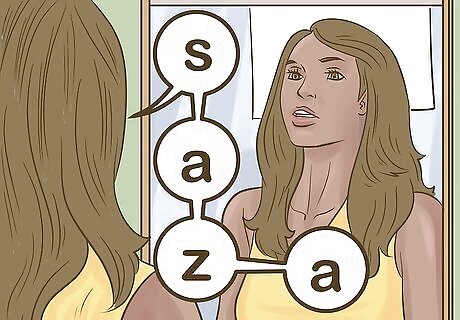
Do speech exercises with broken and blended syllables. Place an “s” in front of a vowel like “a.” Then, say “s” and “a” separately. This is a broken syllable. Try it again by saying the “s” and the “a” together. This is a blended syllable. Repeat broken and blended syllables 10 to 20 times to help improve your speech. For example, you may say “s” and then “a” or “z” and then “a.” You can then try saying “a” and the “s” or “a” and then “z.” Try blended syllables by saying “a” “s” “a” in a row, followed by “a” “z” “a” in a row. You can also say words like "sax," "pass," and "lease." Break them up into syllables and say each syllable slowly.
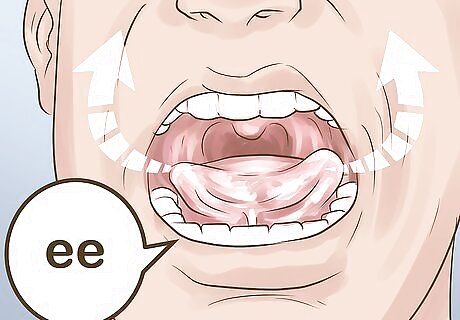
Use the butterfly technique. This technique requires your tongue to imitate the position of a butterfly, where the sides of your tongue tilt upward like butterfly wings. This will allow the sides of your tongue to touch your teeth while air travels down the center of your tongue. Do this by saying “ee” like in “key” or “i” as in “him.” Words like “bin” and “fin” are also good ones to practice the butterfly technique with. Practice this technique 10 to 20 times. Try to maintain the butterfly shape to your tongue.

Drink liquids from a straw to keep your tongue back. Doing this will force your tongue to pull backward, rather than forward. Drink water and other liquids from a straw between your speech therapy exercises to train your tongue to go back in its proper place. You can also try to drink all liquids through a straw on a regular basis to help train your tongue to pull back and to improve your lisp.

Work with a professional speech therapist. Working one on one with a professional speech therapist can help you if you'd like to improve your lisp. The speech therapist can show you exercises you can do to improve your lisp. They can also focus on your specific speech needs based on the type of lisp you have. Ask your primary care doctor for a referral to a professional speech therapist. You can also look online for a professional speech therapist. Joining a support group can also help you connect with people who are experiencing similar difficulties.
Trying Tongue and Teeth Devices
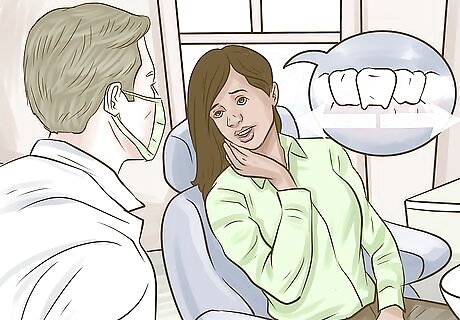
Ask your dentist about a teeth expander. Your dentist may recommend dental treatments like a dental expander on your front teeth to fill in the gap between your teeth. This can help make your lisp less pronounced.
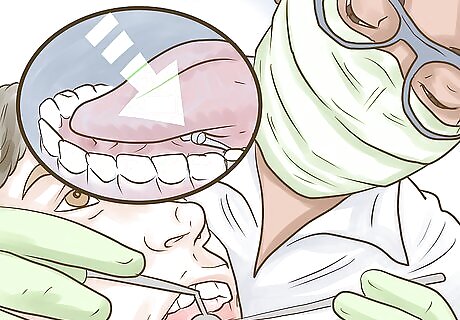
Get a fitted tongue appliance for your lisp. This device will prevent you from pushing your tongue between your teeth, thereby reducing your lisp. The device rests on the back third of your tongue to prevent you from pushing it forward too far. The tongue appliance must be fitted to your mouth by an orthodontist. You may need to then get the appliance refitted as you get older so it still fits your mouth correctly. Your orthodontist may suggest that you do speech therapy as well to improve your lisp.
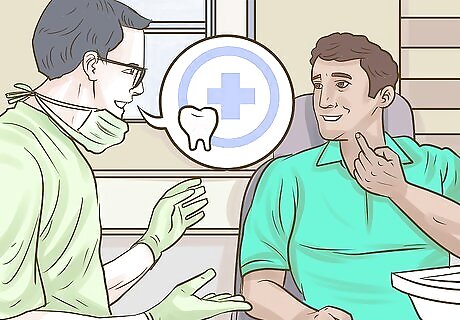
Consider oral surgery to realign your teeth. If your teeth are crooked, this can cause speech issues like a lisp. Your dentist may suggest oral surgery to straighten or realign your teeth. This can then improve your lisp. Talk to your dentist for more details on the procedure.
Boosting Your Self-Confidence and Self-Esteem

Avoid words that are difficult for you to say. If you have to speak in front of others, get in the habit of avoiding words that you struggle with because of your lisp. For example, if you struggle with “s” words like “so” or “simply,” avoid them. Say words that are easier for you to pronounce. If you are writing a speech, avoid words that are hard for you to say aloud. Replace them with easier words or work around them so you do not have to worry about your lisp getting in the way of your presentation. Take this as an opportunity to expand your vocabulary. If you have a hard time saying a particular word, find an alternative that works better for you.
Take your time when speaking. Don’t rush yourself. Pause for a moment to prepare before speaking, and speak slowly if you need to. Concentrate on articulating each word.

Laugh and move on when you struggle with a word. Sometimes, you cannot help mispronouncing a word because of your lisp. Rather than feel embarrassed about it, try to laugh it off and move on with the conversation. Make a joke about how you just cannot get that word right and replace it with an easier word or skip the word and move on. Doing this can help to diffuse the situation and make you feel less self-conscious about your lisp. It can also show others that you are still confident despite your lisp and are not deterred by your speech impediment.
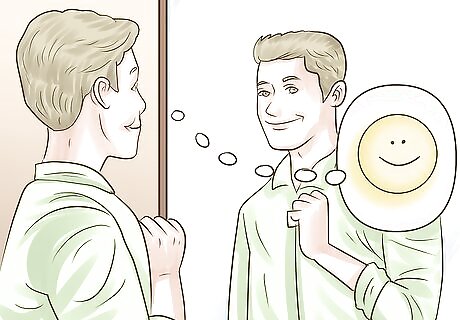
Use positive affirmations. Boost your self-confidence so you feel less self-conscious about your lisp using daily positive affirmations. Repeat affirmations like “I am brave,” “I am bold,” and “I will not be bothered.” Say the affirmations in the mirror at the beginning of your day or before you go to sleep. You may choose positive affirmations that do not contain “s” or “z” sounds so your lisp does not come out when you say them. This may help you feel more confident. In addition to saying your affirmations out loud, try writing them down and posting them somewhere where you will see them regularly. Read them to yourself occasionally as you go about your day.

Make gratitude lists. Practicing gratitude is a good way to keep things in perspective and focus on the positive aspects of your life. If you find yourself fixating on bad thoughts and feelings associated with your lisp, take a moment to gently redirect your thoughts. Think about all the things in your life that you are grateful for, and write them down. Read over your list occasionally to remind yourself of all the positives in your life. Your list could include things like important relationships in your life, accomplishments you have made, good experiences you have had, or a few of your own positive qualities. A gratitude list is also a good way to celebrate your accomplishments as you work on your speech. Keep track of any progress you make, and write down good experiences. When you feel discouraged, you can look back at these notes and remind yourself that you can do it!

Do things you enjoy. Boost your self-esteem and focus your energy in a positive direction by engaging in hobbies and pastimes that you enjoy. Picking up new hobbies can also be a great way to meet new friends. If you’re interested in learning something new or improving your skills at something you’ve already tried, consider signing up for a fun class. Even hobbies that you can do by yourself, like knitting or gardening, can help you feel relaxed and take your mind off of things that you’re feeling anxious about.

Avoid comparing yourself to others. Remember that your circumstances and experiences are unique. If you find that you are comparing yourself to other people who do not struggle with their speech, remind yourself that they have their own struggles and challenges that are different from yours. Spending time on social media can make it especially tempting to compare yourself negatively to others. Remember that when you scroll through your Facebook feed, you are only seeing the parts of your friends’ lives that they choose to share. Remember, a speech doesn't mean there's anything wrong with you. It's just something that you're going through.

Spend time with supportive people. Having a lisp shouldn't stop you from living your life, so reach out to friends and family whom you trust and know will be supportive. If there is anyone in your life who puts you down or makes fun of you, avoid them as much as possible, and end your relationship with the person if you can.

Practice kindness. Doing good things for other people can help you build good relationships and help you feel better about yourself. There are many ways to incorporate kindness into your daily life. You could try: Offering to do a favor for a friend. Doing something to brighten a stranger’s day. Volunteering to help needy people in your community.

Maintain a healthy lifestyle. Help yourself stay positive by taking good care of your physical health. Living a healthy lifestyle can help boost your mood, lower your stress, improve your self-esteem, and give you the energy you need to accomplish your goals every day. A few basic things you can do include: Getting 7-9 hours of sleep every night. Eating a balanced diet with plenty of fresh vegetables and lean proteins. Getting at least 30 minutes of physical activity every day.


















Comments
0 comment